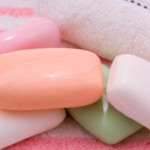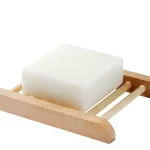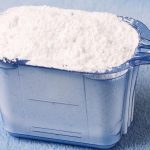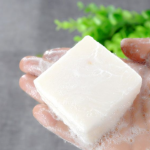What is in soap?

Soap is a very common daily necessity in life. Soap has a wide range of uses in life. For example, it can be used to wash hands. Many people use soap to bathe, especially when their hands are dirty, they can be easily washed off with soap. In fact, the role of soap is not only cleaning but also has the effect of sterilization. The following is an introduction to the composition of soap.
- The main component is sodium stearate, and its molecular formula is CHCOONa (carbon 17 hydrogen 35 + carbon + oxygen + oxygen + sodium) (it can also be written as RCONa, which is produced by the reaction of sodium hydroxide [NaOH] and alkali synthetic oil).
- Soap is a general term for fatty acid metal salts. The carbon number of fatty acids in daily soaps is generally 10-18. The metals are mainly alkali metals such as sodium or potassium and are also made from ammonia and some organic bases such as ethanolamine, triethanolamine, etc. Special purpose soap.
- Soap includes laundry soap, toilet soap, metal soap, liquid soap, and related products fatty acid, hardened oil, glycerin, etc.
- Composition of soap: sodium salt R-CONa of carboxylic acid, synthetic pigment, synthetic fragrance, preservative, antioxidant, foaming agent, hardener, viscous agent, synthetic surfactant.
Copyright 2020, Hebei Guansheng Technology Co.Ltd All Rights Reserved
 Hebei Guangsheng Technology Co.Ltd
Hebei Guangsheng Technology Co.Ltd
 Hebei Guangsheng Technology Co.Ltd
Hebei Guangsheng Technology Co.Ltd






